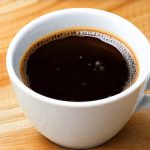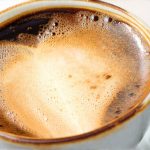The sensation is surprisingly common: you take a small sip of water, juice, coffee, anything really, and almost immediately feel the need to urinate. It’s not a gushing, urgent feeling necessarily, but a distinct awareness of your bladder filling, even after what seems like an insignificant amount of liquid intake. This isn’t always indicative of a medical problem; often it’s a perfectly normal physiological response that many people experience intermittently or consistently. However, understanding why this happens requires delving into the complex interplay between our bodies and how we process fluids, hormonal signals, and neurological pathways. It can be frustrating, even disruptive to daily life, so exploring these mechanisms helps demystify the phenomenon and differentiate between normal variance and potential causes for concern.
The feeling of needing to urinate isn’t solely triggered by the amount of liquid consumed; it’s a multifaceted process involving stretch receptors in the bladder, hormonal influences like vasopressin (ADH), and signals sent to the brain. The sensation is often more pronounced with smaller sips because the rapid influx, even if minimal, quickly stimulates these receptors. Larger volumes tend to be processed more gradually, allowing the body to better regulate fluid balance. Furthermore, what you drink – its temperature, composition, and diuretic properties – significantly impacts how quickly your bladder signals fullness. This can vary greatly from person to person, making it a surprisingly individualized experience that’s often underestimated.
Bladder Function and Sensory Perception
The bladder isn’t constantly aware of every drop of fluid entering it. Instead, it operates on a principle of gradual stretch and signaling. As the bladder fills, mechanoreceptors within its walls detect increasing tension. These receptors send signals to the brain via sensory nerves, gradually building awareness of fullness. This is why you don’t typically feel an immediate urge after slowly drinking a large glass of water – the filling process is more distributed. However, even small volumes delivered quickly can rapidly activate these receptors, creating a noticeable signal. It’s akin to stretching a rubber band; a quick pull feels different than a slow stretch, even if the total extension is the same.
The brain doesn’t just passively receive signals from the bladder. It interprets them based on context and other factors. For instance, your mental state – are you stressed or anxious? – can influence how strongly you perceive bladder fullness. Similarly, expectations play a role; if you anticipate needing to urinate soon, you might be more attuned to even subtle signals from your bladder. This is why the “just in case” bathroom break before leaving the house is so common! The brain effectively pre-processes information and adjusts sensitivity accordingly.
Importantly, different people have varying thresholds for sensing bladder fullness. Some individuals naturally have more sensitive bladders or a heightened awareness of internal sensations. This isn’t necessarily a sign of a problem; it’s simply individual variation in sensory processing. Moreover, the ability to inhibit urination – consciously suppressing the urge – also differs between people, and this capacity can be affected by factors like age and neurological conditions.
Diuretics and Fluid Composition
The type of liquid you consume plays a significant role in how quickly your bladder fills and signals urgency. Certain beverages are naturally diuretic, meaning they promote increased urine production. Caffeine, alcohol, and many teas fall into this category. They don’t necessarily cause the bladder to fill faster; rather, they increase the overall volume of fluid that needs to be processed by the kidneys, leading to more frequent urination. Even sugary drinks can have a diuretic effect due to the osmotic pressure created by high sugar concentrations.
Beyond diuretics, the composition of fluids matters. For example, water tends to be absorbed more efficiently than beverages containing electrolytes or solutes. This means that water is less likely to contribute directly to bladder fullness compared to something like a sports drink with added sugars and salts. Similarly, very cold drinks can sometimes stimulate the bladder due to temperature sensitivity and increased blood flow in the pelvic region.
Understanding these differences allows for proactive adjustments. If you notice needing to urinate frequently after drinking specific beverages, experimenting with alternatives or reducing consumption might alleviate the issue. Staying adequately hydrated is crucial, but choosing fluids that are less diuretic can help manage bladder control and reduce unwanted urgency.
Hormonal Influences: Vasopressin (ADH)
Vasopressin, also known as anti-diuretic hormone (ADH), is a key regulator of fluid balance in the body. Produced by the hypothalamus and released by the pituitary gland, ADH signals the kidneys to reabsorb water back into the bloodstream, reducing urine production. When ADH levels are low – often during sleep or when consuming large amounts of fluids – the kidneys excrete more water, leading to increased urination.
The sudden influx of even a small amount of liquid can temporarily disrupt this hormonal balance. The body responds by suppressing ADH release for a short period, allowing excess fluid to be eliminated. This is particularly noticeable after waking up and taking that first sip of water – ADH levels are naturally lower overnight. It’s also why drinking a lot before bed often results in frequent trips to the bathroom during the night.
Factors like stress, certain medications, and underlying medical conditions can all affect ADH production and function. For example, some diuretics intentionally block ADH action, leading to increased urine output. If you suspect hormonal imbalances might be contributing to your urination patterns, consulting with a healthcare professional is advisable.
Behavioral Considerations & Bladder Training
Sometimes the urge to urinate after small sips isn’t necessarily about physiological changes; it’s about learned behaviors and habits. Frequent bathroom trips can create a cycle where the bladder becomes accustomed to emptying at smaller volumes. This reduces its capacity over time, leading to increased urgency even with minimal fluid intake.
Bladder training is a technique used to help retrain the bladder and increase its functional capacity. It involves gradually increasing the intervals between bathroom visits, encouraging you to resist the urge to go until a predetermined time. Here’s a simple approach:
- Keep a Bladder Diary: Track your urination patterns for a few days to establish a baseline.
- Set Intervals: Start with a slightly longer interval than your current average bathroom break frequency (e.g., if you go every hour, try 75 minutes).
- Resist the Urge: When you feel the urge before the scheduled time, use distraction techniques like deep breathing or mental exercises to suppress it.
- Gradually Increase Intervals: Over several weeks, slowly increase the intervals between bathroom visits as your bladder capacity improves.
It’s essential to remember that consistency is key with bladder training. It requires patience and commitment, but can be effective in restoring normal bladder function. Additionally, avoiding excessive fluid intake before bedtime and limiting diuretic beverages can further support this process.
Ultimately, experiencing a sudden urge to urinate after small sips of liquid is often a normal physiological response, influenced by a complex interplay of factors. However, persistent or disruptive symptoms should prompt a conversation with a healthcare provider to rule out any underlying medical conditions and explore appropriate management strategies.





















